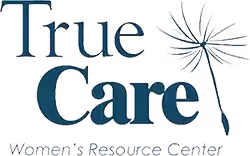There are many phrases and words used to describe that “time of month” that we women have to deal with during our reproductive years: Are you on your period or on the rag? Did your monthly friend arrive? When was your last menstrual period or LMP? Or Maybe Aunt Flow came to visit.
What a Pain!
The bleeding can be embarrassing, especially for a teen wearing white pants to school. It can be plain annoying and a hassle if you want to swim or plan for your wedding night. And don’t you hate when those tampon adds come on TV and the guys are hanging out with you? The cramping is often painful and can lead to staying home curled up in bed. Hormonal changes leading up to the day can make a woman feel moody and bloated and sometimes lead to headaches and body aches. To find out more about the hormones during your cycle, check out this article. Is there anything at all good about your period?
What Good is a Period Anyway?
One good thing about your period is that is lets you know you are not pregnant. It also helps you know where you are in your reproductive cycle. This helps women know when they may be most fertile and likely to conceive (helpful for women who want to get pregnant and women who don’t want to get pregnant).
The scientific word for this “time of the month” is menstruation. Women have, on average, a 28-day reproductive cycle that allows them to conceive a child (around day 14) and have that child implant into the uterus. The first day of your period is day one. Scientific and medical experts picked menstruation as day one because it is an obvious and recognizable sign. From there you can count the days of your cycle all the way up to 28, which is when your next period is due.
How Does This all Work Anyway?
When your period is finished each month, your body will start the cycle over and begin the process of getting ready to conceive a child. Hormones released by your brain and your ovaries allow your body to begin to build a cushy layer of blood and tissue in the lining of your uterus. The ovaries prepare to release a tiny egg. For a normal 28-day cycle (some women have shorter cycles and some have longer cycles), one ovary releases an egg around day 14 (ovulation). If a woman has just had sex a few days prior to ovulation or shortly afterward, she may conceive a child. The tiny, newly created person travels down one of her fallopian tubes and burrows into the soft cushy lining her body has prepared for it. A woman who has conceived will miss her next period and begin to have signs and symptoms of pregnancy. If a woman did not conceive, then her body will complete the reproductive cycle by shedding the cushy lining. The shedding of the uterus lining is your period…back to day one.
The female reproductive tract is very complex and really quite fascinating. Each month is devoted to preparing for pregnancy. The perfect balance of hormones work together to manage all of the complex functions. In spite of the inconvenience of our “monthly friend,” female fertility is an amazing process.
If You’d Like to Understand This Process Better…
Do you understand your monthly cycle? At True Care, we have a class called Feminine Genius which can help you learn more about it. You will get to map out your own cycle, learn how to protect and preserve your fertility by making wise choices, learn about abstaining from sex until marriage (preventing unplanned pregnancies and STDs), and get tips on how to choose a future mate. This is an incentive-based class by which you’ll be given a gift card after you complete the different classes. If you are interested call True Care at 307-472-2810 and ask to speak with Rebecca.
